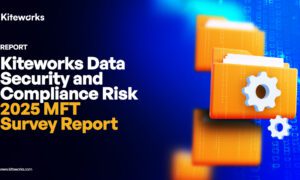“82% of data breaches involve a human element.”
That’s not a typo. According to Verizon’s Data Breach Investigations Report, the weakest link in cybersecurity isn’t outdated software or perimeter firewalls—it’s us. Employees falling for phishing emails, reusing passwords, clicking malicious links, or being manipulated by social engineering tactics are opening the gates to attackers daily.
And while CISOs have long been focused on patching systems, deploying new tools, and managing zero-day vulnerabilities, boards are starting to ask a new kind of question:
“What are we doing to mitigate human risk?”
This shift demands more than a better spam filter. It requires a fundamental evolution in how we think about cybersecurity. One centered not around the tech, but around the people using it.
Human-Centered Cybersecurity: A Shift in Defense Strategy
Traditional cybersecurity is largely tech-focused—firewalls, endpoint protection, intrusion detection, and encryption. These remain essential. But they miss a glaring threat vector: human behavior.
Human-centered cybersecurity takes a different approach. It recognizes that no matter how advanced your tools are, a single human error—clicking the wrong link or trusting the wrong person—can bypass every technical control in place.
This methodology involves:
- Understanding psychological and emotional triggers that hackers exploit.
- Equipping employees with behavioral defenses through continuous education.
- Measuring individual and organizational risk levels based on real-world simulations.
Boards and CISOs alike are recognizing that cyber resilience isn’t just about systems—it’s about people. And measuring human risk is the next evolution in cyber defense.
The Role of Phishing Simulations & Emotional Vulnerability Insights
Cyber attackers aren’t just throwing random spam anymore—they’re crafting highly personalized, emotionally charged phishing messages. From fake invoices to urgent HR requests, social engineering is increasingly sophisticated.
That’s why phishing simulations have become essential tools in the CISO’s arsenal.
But not all simulations are created equal.
Traditional vs. Hyper-Realistic Phishing Simulations
Many companies run generic simulations that test whether employees click on an obviously fake link. The problem? These don’t reflect the psychological nuance of real-world attacks.
ClearPhish has redefined the standard with its Hyper-Realistic Phishing Simulations—crafted to mimic real threat actor tactics and emotional manipulation. These simulations factor in:
- Tone and timing (e.g., “your paycheck is delayed” just before payday).
- Role-specific scenarios (e.g., CFO-targeted vendor fraud).
- Breach realism, creating emotional urgency and decision-making pressure.
The result: Employees are tested in scenarios that closely mirror actual cyber threats, providing a truer sense of vulnerability and readiness.
Emotional Vulnerability Scoring
ClearPhish introduces another layer: Emotional Vulnerability Index (EVI). This insight identifies:
- Which employees are more susceptible to emotional manipulation (fear, urgency, authority).
- Which departments are higher risk due to their exposure or roles.
- How stress or overconfidence might be influencing cyber behavior.
With this intelligence, CISOs can present quantifiable human risk metrics to the board—moving beyond gut feeling into actionable, data-backed reporting.
Practical Wins: How Organizations Benefit from Employee-Focused Training
Shifting the focus from blame to empowerment transforms security culture. Here are real-world outcomes organizations are achieving through employee cyber training and phishing simulations:
- Reduced Click Rates on Phishing Tests
Companies that implement ongoing simulations report a dramatic drop in phishing click rates—some as much as 70% within 3 months. This not only reduces breach likelihood but proves the ROI of training programs.
- Faster Incident Reporting
Training employees to spot and report phishing emails is just as important as preventing the click. Simulations help build this reflex. Organizations using ClearPhish’s platform have seen a 65% increase in reporting rates, enhancing threat visibility and response speed.
- Tailored Risk Profiles
Rather than blanket training, ClearPhish’s Story-Based Micro Cyber Awareness Modules deliver short, engaging scenarios based on individual and team risk profiles. For example:
- Finance staff might receive modules on business email compromise (BEC).
- HR may be trained on executive impersonation and fake resume threats.
- Developers could be walked through real-world credential harvesting scenarios.
This micro-training method maximizes retention, minimizes disruption, and keeps cyber hygiene top-of-mind.
ClearPhish: Bringing Precision to Human Risk Reporting
ClearPhish goes beyond checkbox awareness training. Our platform is designed for precision, realism, and impact, helping CISOs bridge the gap between cyber operations and board-level visibility.
Key Differentiators:
- Hyper-Realistic Simulations that emulate real-world phishing attacks with emotional depth
- Story-Based Micro Cyber Awareness Modules tailored by department and behavior patterns
- Emotional Vulnerability Index (EVI) to quantify human susceptibility
- Risk dashboards with real-time insights, ready to share with executive stakeholders
This approach doesn’t just reduce risk—it helps CISOs demonstrate measurable progress to the boardroom. Because in today’s landscape, it’s no longer enough to say “we trained our people.” You need to prove how much safer they’ve become.
What CISOs Should Be Reporting to the Board
To keep leadership aligned and informed, here are key human risk metrics every CISO should consider including in quarterly or annual security briefings:
Key Human Risk Metrics:
- Phishing Click-Through Rates (by department or individual)
- Time-to-Report Suspicious Emails
- Training Completion & Engagement Rates
- Emotional Vulnerability Index Trends
- Improvement Over Time (before vs. after training/simulations)
- Top Risk Personas or Behavioral Patterns
These data points not only highlight areas of strength but expose blind spots. And with tools like ClearPhish, they’re no longer hard to gather.
Final Thoughts: Human Error is the Battleground
Technology will always be part of the cybersecurity equation—but the human element is now the battlefield.
For CISOs, quantifying and reducing human risk is no longer optional. Boards are demanding evidence that organizations aren’t just investing in tools—but in people.
That’s where ClearPhish leads. We bring clarity, realism, and measurable insight into human behavior—turning the soft side of cybersecurity into hard data you can report and act on.




































